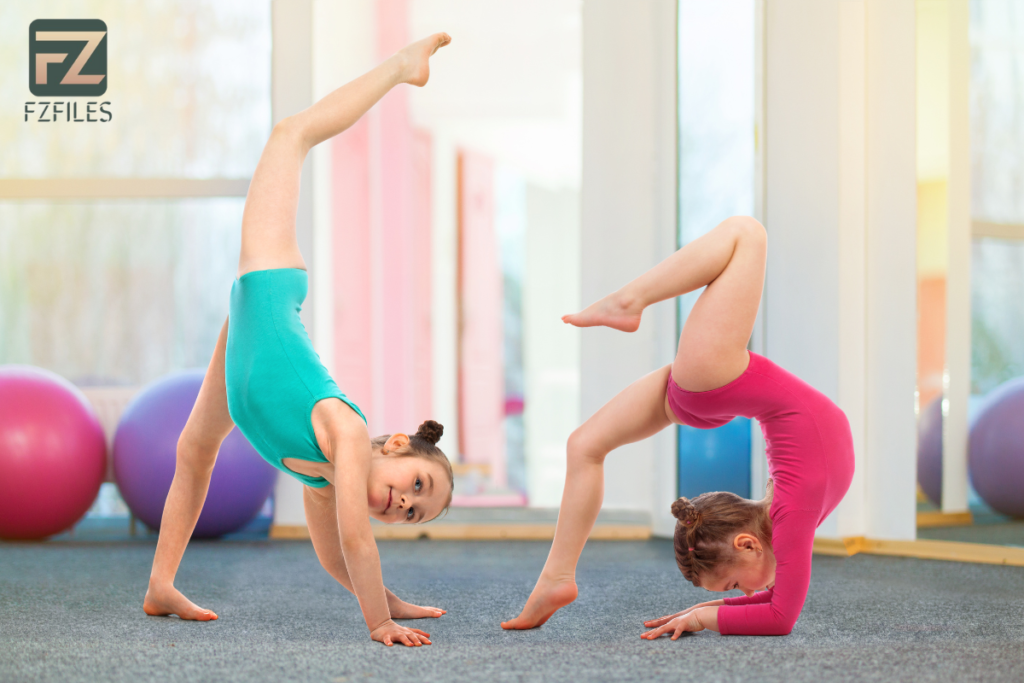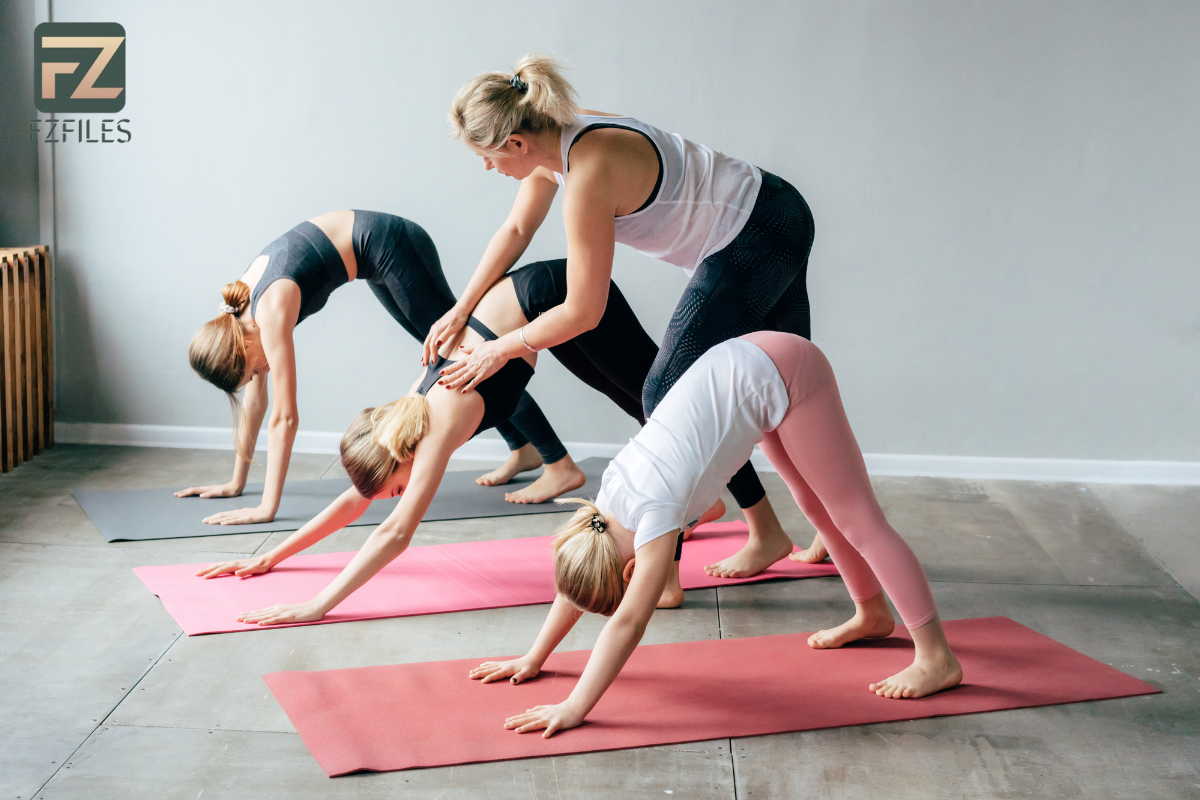Introduction to Flexibility Training for Kids
Flexibility training is essential for children’s physical development, supporting their growth, coordination, and overall well-being. In 2024, new and engaging flexibility exercises have been designed specifically for kids, making it easier and more enjoyable for them to stay active and healthy. This comprehensive guide explores the importance of flexibility in child development and offers a range of fun and effective exercises to incorporate into a child’s routine.
Importance of Flexibility in Child Development
- Improved Range of Motion
Flexibility exercises enhance the range of motion in children’s joints, allowing for smoother and more efficient movement. This improved mobility is crucial for daily activities and sports, helping to prevent injuries and promote overall physical health.
- Enhanced Muscle Coordination
By improving flexibility, children can develop better muscle coordination and balance. This coordination is vital for performing complex movements and participating in various physical activities, from playground games to organized sports.
- Reduced Risk of Injuries
Regular flexibility training helps to reduce the risk of injuries by keeping muscles and joints supple. Flexible muscles are less likely to strain or tear during physical activities, ensuring that children can play and move safely.
- Better Posture
Good flexibility contributes to better posture by balancing muscle length and tension across the body. Proper posture is essential for preventing musculoskeletal issues and supporting healthy growth and development.
- Stress Relief and Relaxation
Stretching exercises can also serve as a form of relaxation, helping children to manage stress and anxiety. Engaging in regular flexibility training provides a positive outlet for energy and emotions, promoting mental well-being.
Top Flexibility Exercises for Kids
- Butterfly Stretch
How to Perform:
- Sit on the floor with the soles of the feet together and knees bent out to the sides.
- Hold the feet with the hands and gently push the knees towards the floor.
- Hold the stretch for 20-30 seconds.
Benefits: Improves flexibility in the inner thighs and groin, promoting better hip mobility.
- Cat-Cow Stretch
How to Perform:
- Start on all fours with hands under the shoulders and knees under the hips.
- Arch the back towards the ceiling (Cat pose) and then dip the belly towards the floor (Cow pose).
- Alternate between these positions for 10-15 repetitions.
Benefits: Enhances spinal flexibility and promotes healthy back posture.
- Toe Touch Stretch
How to Perform:
- Stand with feet hip-width apart.
- Bend forward at the waist and try to touch the toes, keeping the knees slightly bent.
- Hold the stretch for 20-30 seconds.
Benefits: Stretches the hamstrings and lower back, improving overall flexibility.
- Superman Stretch
How to Perform:
- Lie face down on the floor with arms extended in front.
- Lift both arms and legs off the ground simultaneously, holding the position for a few seconds.
- Lower and repeat for 10-15 repetitions.
Benefits: Strengthens the back muscles and improves flexibility in the spine.

- Cobra Stretch
How to Perform:
- Lie face down on the floor with hands under the shoulders.
- Push up, lifting the chest off the ground while keeping the hips on the floor.
- Hold the stretch for 20-30 seconds.
Benefits: Stretches the abdominal muscles and promotes spinal flexibility.
- Child’s Pose
How to Perform:
- Kneel on the floor with big toes touching and knees spread apart.
- Sit back on the heels and stretch the arms forward, lowering the chest towards the floor.
- Hold the stretch for 20-30 seconds.
Benefits: Extends the back, hips, and shoulders, advancing unwinding and adaptability.
- Side Stretch
How to Perform:
- Stand with feet hip-width separated and arms along the edges.
- Raise one arm overhead and lean to the opposite side, keeping the hips level.
- Hold the stretch for 20-30 seconds and switch sides.
Benefits: Improves flexibility in the sides of the body and promotes better posture.
Creating a Kid-friendly Flexibility Routine
- Incorporate Fun Elements
To keep children engaged, incorporate fun elements into the flexibility routine. Use playful names for stretches, incorporate music, or create a story around the exercises. For example, call the Cobra Stretch the “Snake Stretch” or the Butterfly Stretch the “Fairy Wings Stretch.”
- Keep Sessions Short and Sweet
Children have shorter attention spans, so keep flexibility sessions short and focused. Aim for 10-15 minutes of stretching exercises, gradually increasing the duration as children become more comfortable with the routine.
- Use Visual Aids and Demonstrations
Visual aids and demonstrations can help children understand how to perform each stretch correctly. Use posters, and videos, or demonstrate the stretches yourself to guide them through the routine.
- Encourage Consistency
Encourage consistency by incorporating flexibility training into the daily routine. Schedule regular stretching sessions, such as before bed or after school, to make it a habit.
- Involve the Whole Family
Make flexibility training a family activity to encourage participation and make it more enjoyable. Stretch together as a family, creating a positive and supportive environment for physical activity.
Expert Tips for Encouraging Flexibility in Children
- Praise and Positive Reinforcement
Use praise and positive reinforcement to encourage children to participate in flexibility training. Celebrate their progress and achievements, no matter how small, to build confidence and motivation.
- Set Realistic Goals
Set realistic and achievable goals for flexibility training. Start with simple stretches and gradually introduce more challenging exercises as children become more flexible.
- Focus on Fun
Keep the focus on fun rather than performance. Children are more likely to engage in activities that they find enjoyable, so prioritize fun and creativity in the flexibility routine.
- Be a Role Model
Children learn by example, so be a role model by participating in flexibility training yourself. Show enthusiasm and commitment to the routine, and children will be more likely to follow suit.
- Ensure Safety
Safety is paramount when it comes to flexibility training for children. Ensure that stretches are performed correctly and within the child’s comfort level. Avoid pushing them too hard and monitor for any signs of discomfort or pain.
- Create a Positive Environment
Create a positive and supportive environment for flexibility training. Use encouraging language, provide a comfortable space for stretching, and make it a positive experience for children.
- Incorporate Games and Challenges
Incorporate games and challenges into the flexibility routine to keep it engaging. For example, create a stretching obstacle course or have a “stretching contest” to see who can hold a pose the longest.
Conclusion
Flexibility training is a vital component of a child’s physical development, supporting their growth, coordination, and overall well-being. By incorporating fun and effective exercises into their routine, children can improve their flexibility, reduce the risk of injuries, and enjoy a healthier lifestyle.
The 2024 best practices for flexibility training emphasize engaging and enjoyable exercises that cater to children’s needs and preferences. By following these guidelines and incorporating the expert tips provided, parents and caregivers can create a positive and effective flexibility routine for their children.
Remember to prioritize safety, encourage consistency, and focus on making flexibility training a fun and rewarding experience. With dedication and the right approach, children can reap the numerous benefits of flexibility training and develop healthy habits that will last a lifetime.
